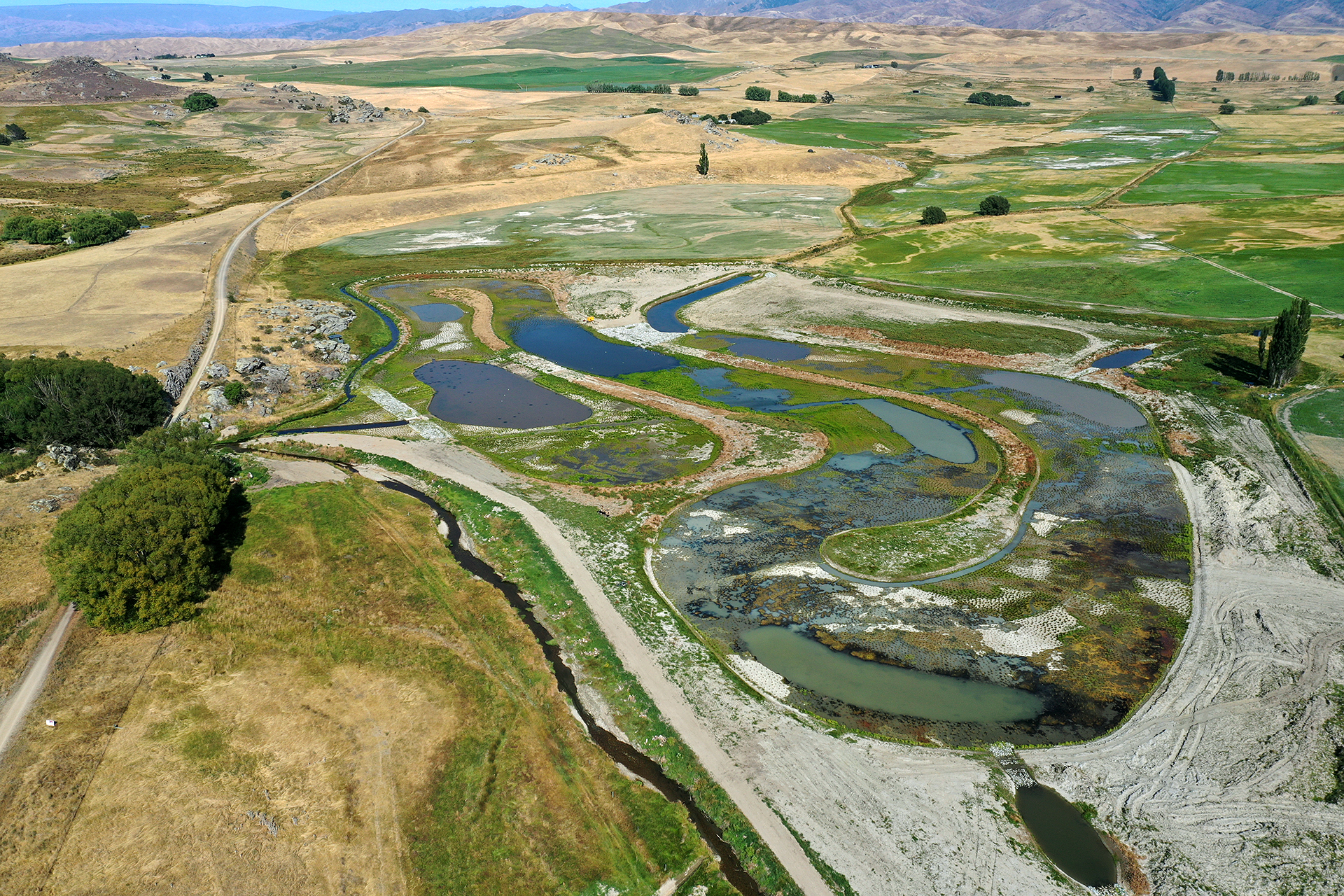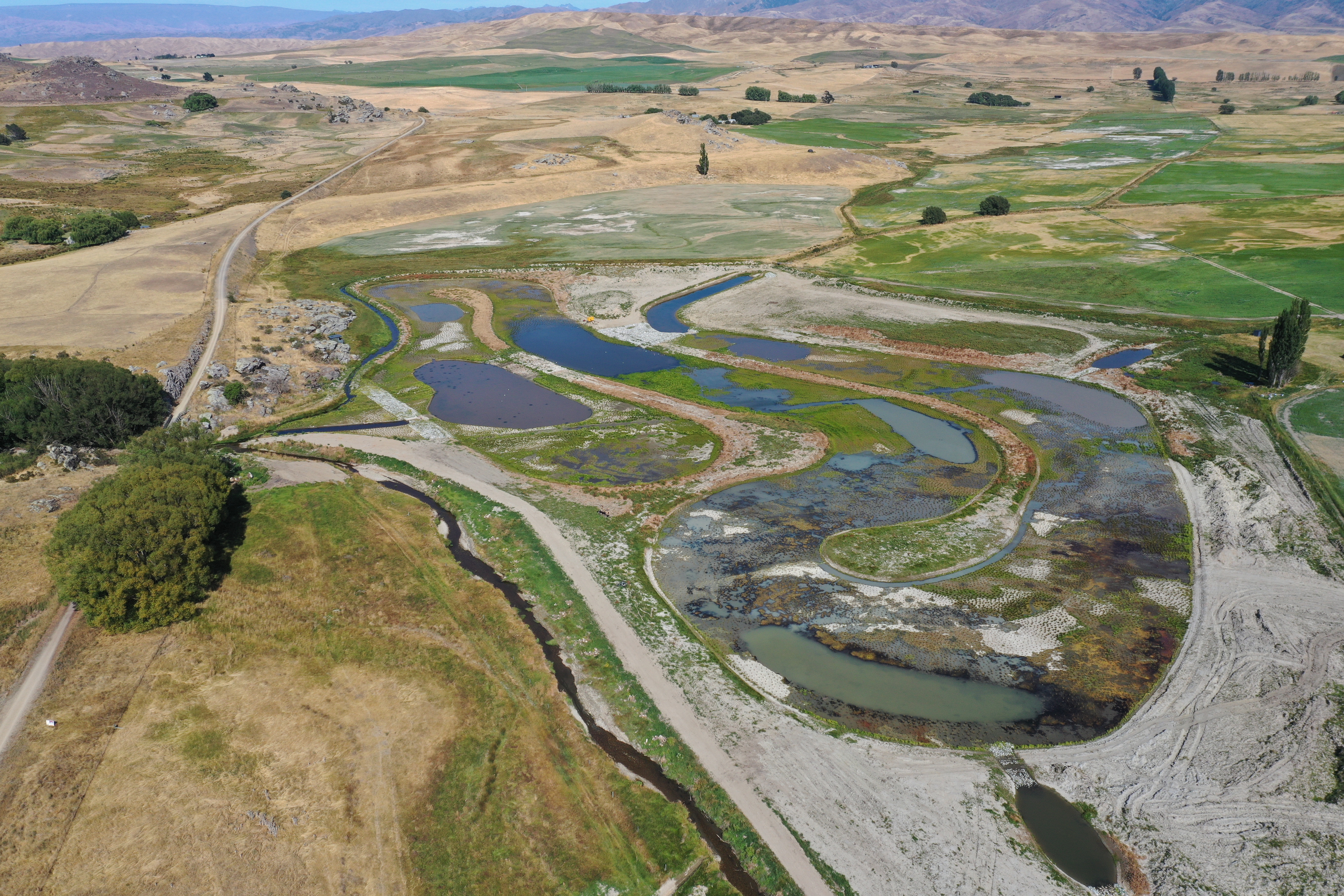Otago celebrating World Wetlands Day this week
Wednesday 31 January 2024

On the eve of the annual World Wetlands Day, the Otago Regional Council is highlighting the identification of more than 15,000 wetlands across Otago in recent years.
Wednesday 31 January 2024

On the eve of the annual World Wetlands Day, the Otago Regional Council is highlighting the identification of more than 15,000 wetlands across Otago in recent years.
ORC Chair Gretchen Robertson says in a newly launched programme ORC are looking at all wetland types whether small or large.
“In third year of the seven years of our Wetland Mapping Project, we’ve covered a quarter of the region and have already identified more than 15,000 wetlands sites,” she says.
“The aim in launching our comprehensive Wetland Programme is to develop an inventory of wetland extent, in maps and also their condition, or ecological health,” she says.
One of Otago’s more high-profile wetland projects - Thomsons Creek near Omakau – is hosting a public open day on World Wetlands Day on Friday, 2 February.
“Nationally the huge majority of wetlands have been lost, but we’re hopeful of reversing that trend in Otago,” Cr Robertson says.
Previously, the ORC’s current Regional Plan Water for Otago was limited in its scope since the rules and policies were designed to protect 171 regionally significant wetlands and management areas.
Cr Robertson says in addition to the wetland mapping, ORC is also monitoring ecological health in a subset of representative wetland sites to generate sufficient information to enable the Council to assess if the policies, rules, and methods in the upcoming regional plans ensure there is no loss of extent or values of wetlands.

Upper Taieri Scroll Plains
“The inventory will also help in determining dollar value of wetlands particularly those on private land to account on the upcoming biodiversity and carbon credits,” she says.
Otago Catchment Community Inc project; Thomsons Creek
Cr Robertson says the Thomsons Creek wetland project has created a large-scale, constructed wetland.
“This returns biodiversity to the catchment and acts as a giant sponge improving the quality of Thomsons Creek water,” she says.
Thomsons Creek Wetland Project Manager, Nicola McGrouther, highlights what better day to celebrate completion of the first phase of Thomsons wetland, than on World Wetlands Day.
The five hectare constructed wetland has more than 41,000 plants established and is already a thriving home to rare birds and native fish in less than a year.

Thomsons Creek wetland near Omakau; January 2024
“We'd love for people to come and join us from 3.30pm to learn how this wetland came to be, how it will improve water quality and ultimately how it will become a community asset for generations to come,” she says.
At Thomsons Creek on Friday, between 3:30pm-6pm, the public can take a picnic and enjoy guided wetland tours, looking at the wetland’s construction and planting to date. Parking and access is found by turning off SH85 (there’s signage) onto Alton Street, which turns into White Road. Travel 1.3 km and parking is to the left; on the corner of White Road and Chestermans Road.
The Thomsons Catchment Project’s overall goal is to increase galaxiid numbers, through use of a fish barrier installed last year, wetland riparian planting and fencing, to be followed up by fish monitoring.
Local Wetland Ecologist Peter Johnson says Otago is home to many diverse and distinctive wetland types which are rare nationally.
“In Otago wetlands occur from lowland to alpine areas in the Southern Alps, central parts with continental climates, and along the more temperate eastern coastal areas. These factors peculiar to our region create a varied landscape supporting thousands of wetlands, a diversity that is arguably unparalleled in any other region of New Zealand,” he says.
Of the nine broad wetland hydrosystems recognised nationally eight occur are in Otago. The number, variety, and types of wetlands in Otago are a major natural asset for the region, providing numerous ecosystem services supporting towns and rural communities.
Otago wetlands include Scroll Plains and meander wetlands exemplified by the Upper Taieri River Scroll Plains, and the Fortification Stream and other meander systems at many scales, in the uplands.
Another unusual type is String bog or patterned mire wetlands, usually in uplands on central and eastern mountains where low temperatures and nutrient limitations facilitate peat accumulation on gentle slopes, creating extensive cushion bog and fen communities.
Examples of string bogs include stream headwater stepped bogs on the Lammerlaw Range and the impressive Nokomai/Nevis patterned mires.
Another unique and naturally uncommon wetland type that are endemic to Otago are Saline Wetlands where local mineralisation and evaporative processes result in accumulation of soluble salts and formation of alkaline soils; examples are Sutton Salt Lake and isolated patches through the inland basins of Central Otago.
Wetlands perform important ecosystem services, including storing water; filtering sediment, retaining, and reducing nutrients and toxic compounds, storing, and sequestering carbon; and buffering major coastal and inland flooding events.
Besides their numerous ecological significances, wetlands are also sites of historical, cultural, and economic importance and are sources for mātauranga (knowledge), livelihood and wellbeing to local marae, hapū, and iwi.
Cr Robertson says ORC also helps landowners, farmers and communities in protecting and enhancing wetlands values such as wetlands in Pleasant River Estuary and Thomsons Creek, including through ORC’s consent fee assistance programme.
“The amount of community and landowner-driven work and resource going into caring for existing wetlands and recreating these important biodiversity-rich sponges, where they have been lost, is hugely impressive,” she says.
The value of wetlands around the world was formally recognised in 1971 when the Convention on Wetlands of International Importance was signed in the Iranian town of Ramsar.
The convention is also known as Ramsar Convention and is celebrated globally as World Wetlands Day, on February 2 every year.
Organisers say our interdependence is both “beautiful and fragile” and this campaign underlines the urgency with which we need to act to preserve and restore these richly biodiverse ecosystems which underpin human wellbeing.
There are 171 countries as signatories to Ramsar Convention with 2414 wetlands covering more than 250 million hectares designated as sites of international importance. New Zealand became signatory to the convention in 1976.
There are seven wetland sites of international importance in New Zealand (out of 2414 sites globally), the nearest to us is Awarua Waituna Lagoon in the Southland Region. A Ramsar site is yet to established in Otago.
Migrating birds visiting New Zealand’s wetlands are a constant reminder of the global connections, with some birds travelling distances of 12,000 km nonstop from the Arctic.